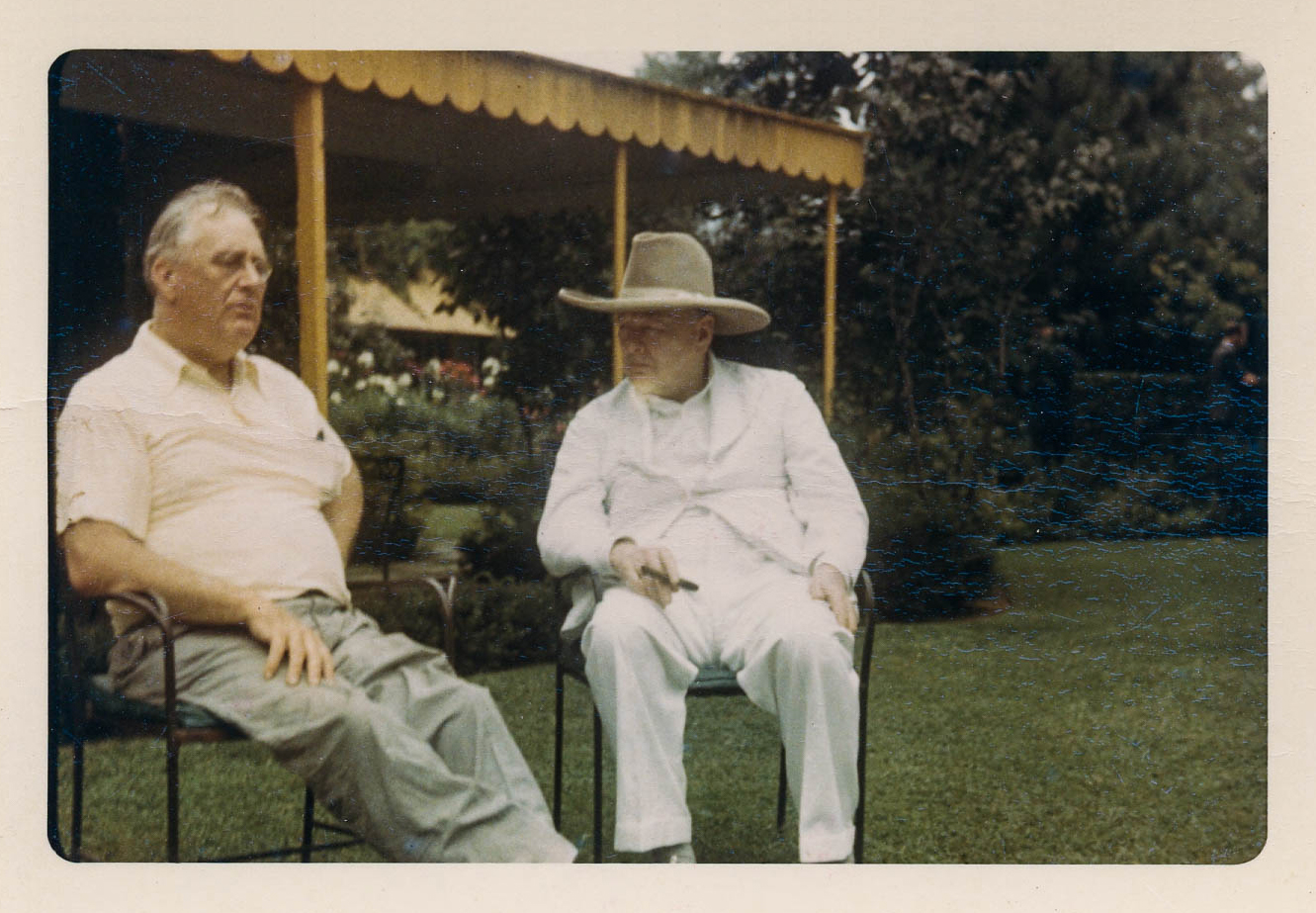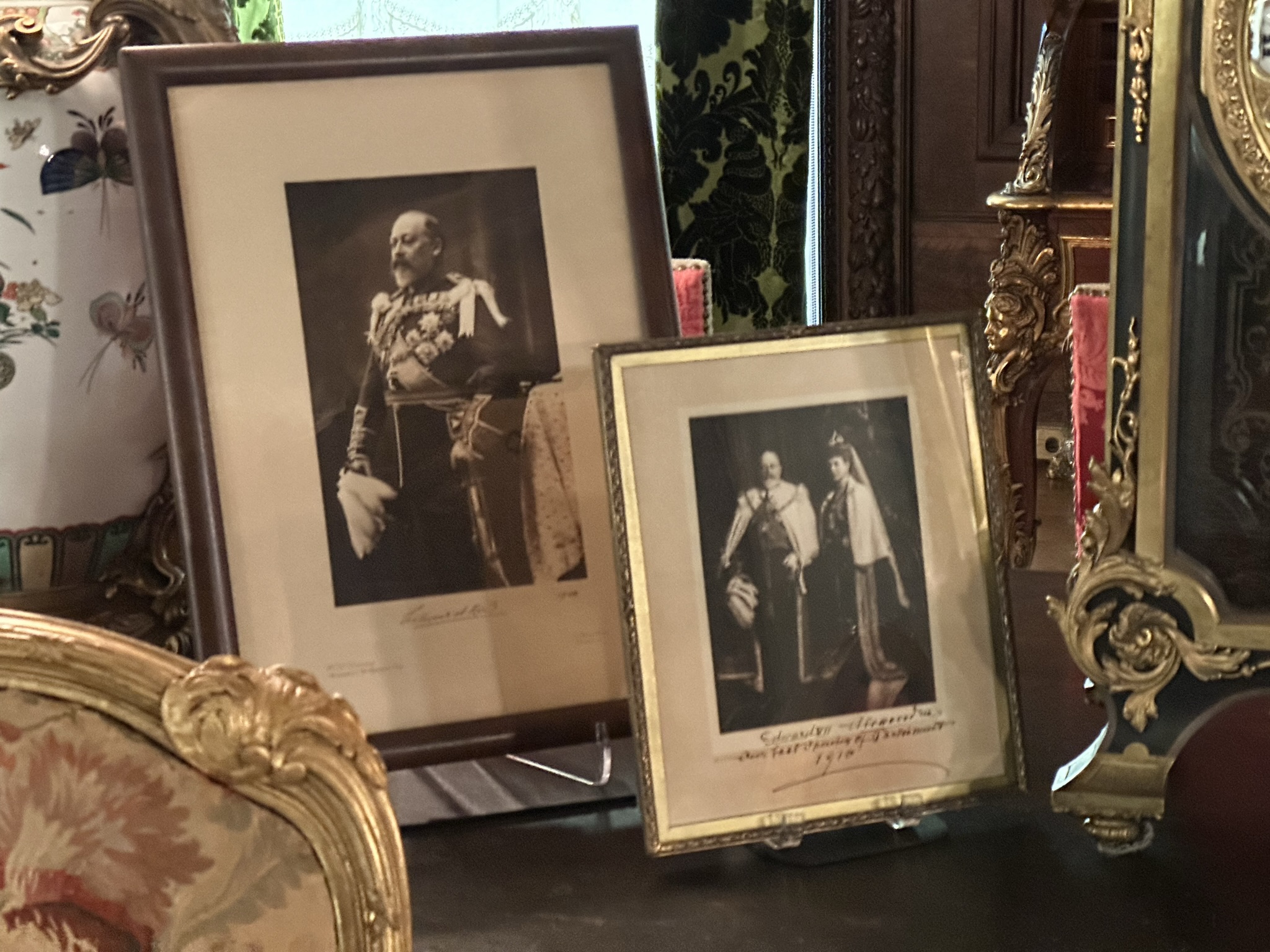Autographed portraits of Edward VII and Alexandria in the Living Room at the Vanderbilt's house at Hyde Park.
For the first time in almost seven decades, the world will witness one of Great Britain’s most sacred traditions: a Royal Coronation. More significant than a royal wedding, the crowning of King Charles III will be the first coronation witnessed by British subjects in generations. The King’s mother, Queen Elizabeth II, reigned for an unprecedented and record breaking seventy years. Following her passing last year, planning was set in motion for the highly anticipated coronation of her eldest son. A coronation is the ceremony during which a sovereign is crowned. The transfer of title and powers, including the monarch's role as the head of the Church of England, is symbolized in the physical act of placing a crown on the monarch's head. On May 6, Charles III will take center stage in this thousand-year-old ceremony at London’s Westminster Abbey. Once the ritual is over, he will take his place in a long ancestral line of British monarchs.
Although the United States severed ties with the British crown during the American Revolution, the two countries have maintained a supportive relationship for generations. Influential individuals and families from both sides of the Atlantic have had long lasting friendships and correspondence; the Vanderbilts are no exceptions. Framed photos of prominent members of American and British society, including two American Presidents and several members of the British Royal Family, rest upon the tabletops around the Vanderbilt’s Living Room. These autographed photos include official portraits of King Edward VII and Queen Alexandria, wearing their regal attire on the occasion of opening of the British Parliament in 1910. Such conspicuous display of notable individuals in the most public of rooms was no accident. Mrs. Vanderbilt, desperately seeking acceptance among old money-dominated New York society, was known to employ dinner table theatrics in the brazen display of her social credentials. James Roosevelt, the President’s older half-brother, dined with the Vanderbilts at their mansion on several occasions. According to FDR, who shared his brother’s story,
At the appropriate time the dinner was halted. The butler, in full livery, approached and called out in solemn tones: “A cable from King Edward.”
“Dear old Knollys,” said Mrs. V. “How lovely of him [reading]. He’s thanking me for my birthday greeting to the King.”
Some time later the President’s brother was again a Vanderbilt dinner guest. The same ceremony and the same dialogue was repeated.”1
Newspaper accounts of social engagements for the rich and well-to-do document that Louise Vanderbilt didn’t limit such performance to her own dinner table at Hyde Park. The extravagance of her efforts was recorded in 1909, when Mrs. Vanderbilt, in the company of royalty, attended a London dinner party hosted by the American Ambassador for the King; “American circles in London are agog with a story the incident of which occurred at the dinner recently given for the King, at which Mrs. Frederick Vanderbilt and Mrs. George Keppel were among the guests. Mrs. Vanderbilt was wearing on her corsage a big diamond ornament which attracted much attention…” The article explains Mrs. Keppel’s “special admiration of the brooch and her apparent shock when Mrs. Vanderbilt removed it and gave it to Mrs. Keppel as a gift. “The King was nearby and seemed somewhat astonished at such generosity, for the ornament was a huge affair with big diamonds and was worth a very considerable sum.”2

Consuelo (Vanderbilt) Spencer-Churchill, Duchess of Marlborough at the coronation of Edward VII, 1902.
On the other side of the table, English nobility were happy to oblige the new-monied American millionaires in their quest for social recognition. Rapid social and economic changes unfolding at the turn of the twentieth century resulted in a future of financial uncertainty for members of the British aristocracy. To satisfy dwindling bank accounts that once supported their prestigious lifestyle, the British aristocracy were willing to exchange noble titles for the large dowries of American heiresses.
Through strategic marriages, American fortunes enabled the British gentry to maintain their sprawling estates and avoid selling off the art treasures held within. These American brides became known as “dollar princesses.” Fredrick and Louise Vanderbilt’s niece, Consuelo Vanderbilt, married Charles Spencer-Churchill, the 9th Duke of Marlborough. The Duke’s cousin, Lord Randolph Churchill, would also marry an American dollar princess, Jennie Jerome. Their son, Sir Winston Churchill, made his own impression in a dining room at Hyde Park. Assistant Secretary to the President William Hassett recorded an incident in his diary on June 19, 1942:
Churchill, wearing his famous siren suit, got out of his plane about noon. The President greeted him warmly and drove him to the house in his own personal car. The President and the Prime Minister had a long conference after lunch, tea at Laura Delano’s, dinner at the President’s home. The President put on a black tie and white dinner coat. Winnie came down in the siren suit, for which he apologized. O.K. with the Boss.”3
A guest at Hyde Park on several occasions from 1942 to 1945, Churchill received the Roosevelts’ signature hospitality that easily blended the formal and informal. By this time, old New York society and the British aristocracy mingled over dinner conversation about unstable social order as America and Britain navigated a world at war.
To learn more about the Roosevelts and the British monarchy, visit our feature article on the park's website.

Winston Churchill in his summer whites with a casually dressed FDR at Val-Kill, 1942. Eleanor Roosevelt National Historic Site, Cook-Dickerman Collection.
NOTES
1 John G. Waite Associates, Vanderbilt Mansion National Historic Site, Historic Furnishings Report, Historical Date, Volume I: Public and Private Rooms.” September 2005, page 39.
2 “Mrs. Vanderbilt Amazes King With Generosity,” The Hattiesburg News, July 14, 1909, page 2, Library of Congress.
3 William D. Hassett, Off the Record with FDR (New Brunswick: Rutgers University Press, 1958), 64-64.

